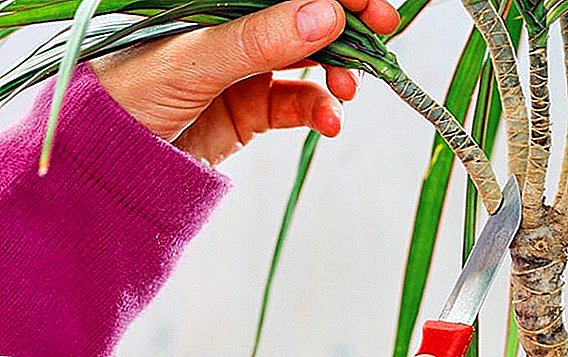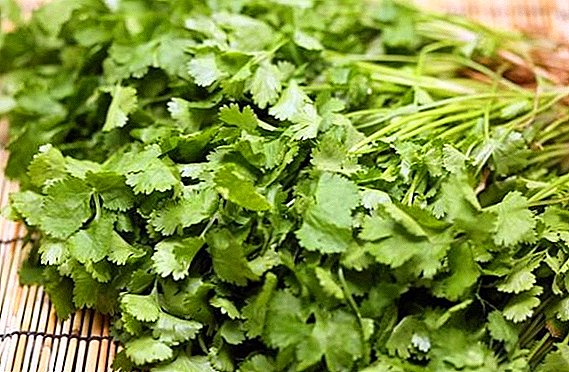 One of the most beautiful English roses is considered to be the rose Mary Rose.
One of the most beautiful English roses is considered to be the rose Mary Rose.
This is one of the roses of David Austin, who in the 60s of the last century decided to engage in the selection of new types of beautiful flowers.
Let's see what these plants are, how to care for them and propagate them.
Breeding history
Breeder David Austin set a goal to bring such roses, which would look like old, but have modern qualities.
Important features of the modern rose for him were:
- the possibility of re-flowering;
- strong smell;
- proportion of the shape of the bush.

Did you know? Rose oil is considered the most expensive oil in the world. It is valued even more than gold and platinum, since it requires a lot of resources to mine.Austin has received this variety thanks to the crossing of roses Wife of Bath and The Miller. The flower was named after the three-deck flagship of the English navy under King Henry VIII Tudor.
“Mary Rose” is widely used for breeding new varieties, it transmits only its best qualities. Child varieties of this flower are Winchester Cathedral in white, Redoute pale pink color and many others.
Description and characteristics
The description of this variety includes such basic qualities: a powerful bush with a large number of branches, resistance to diseases and winter hardiness. In the photo you can see that the rose "Mary Rose" has a pleasant bright pink color and cup-shaped branches.
The diameter of the flower is 8-10 centimeters, the bush grows to a meter in height and 60 centimeters in width. The flowers are cupped, terry to the touch. After the beginning of blooming, the lower petals gradually become pale and slightly bend down. 
Did you know? There are about 800 varieties of English roses.The shoots of the plant are prickly, each of them contains brushes of 3-7 flowers, each of which has a diameter of 10-12 centimeters. In one flower on average contains 55-65 petals.
The foliage of the bush has a juicy green color, it is lush and matte. The bloom starts early (at the beginning of summer) and continues to smell sweet for a long time (until late autumn).
The aroma of the bud can be traced subtle notes of honey and almond. If you cut the flowers, the bouquet will turn out, though beautiful, but short-lived. It is much more practical to admire it, growing on the site.
There are various ways to extend the life of a rose in a vase.
Plant conditions
This flower will feel best in the penumbra. If it is planted in a sunny area, the petals will quickly burn, and the flowers themselves will bloom faster. In the penumbra, the flowers themselves discard unnecessary petals, before they get an untidy look.
In terms of soil and neighborhood rose unpretentious. You can plant next to it any variety of roses. The main thing is that both Mary Rose and the neighboring roses have enough room for growth and development. 
Important! In order for the flowers to be larger, it is necessary to carry out formative pruning in the spring - shorten the stems in half the length.A great solution would be to plant a "Mary Rose" in the very center of the rose garden, as its large, sprawling bush would be beneficial to look at this place. This plant will grow even on poor soils, which makes it universal.
Preparation and planting seedlings
Before planting a crop, you need to prune the root system of the plant and soak it in water with a rooting stimulator. In a solution of seedlings must be left for a day.
Next, you need to dig a planting hole for a plant measuring 50 * 50 centimeters. Good effect on the plant, if you add to the ground for planting humus or compost. But if there is no such possibility, the usual garden land will do.
The place of grafting of a rose is sure to be buried in the soil by about 10 centimeters. If this is not done, the plant will develop poorly, the grafting site will dry in the sun, the bark at this place will peel off. Without penetration, this culture quickly ages and dies, new shoots do not appear. Having planted the plant in the ground, you need to spud its part, which is above the ground. Such care helps to improve the rooting of the flower.
Having planted the plant in the ground, you need to spud its part, which is above the ground. Such care helps to improve the rooting of the flower.
Grade Care
English roses are not very capricious in the care. However, to create the most favorable conditions for the proper development and rapid growth of a flower, it is worth making a little effort.
Watering
As soon as it was noticed that the soil under the rose is dry, it is necessary to water it. This procedure is done in the evening, about 5-7 liters of water are poured under each bush. Filling the bush with plenty of water, as well as watering when the soil is already wet, can lead to rotting of the roots and the death of the plant.
Important! To stimulate the emergence of new buds, you need to independently remove all the flowers that have withered or faded.
Fertilizer
Before mass flowering of Mary Rose begins, nitrogenous fertilizer must be applied. When the rose has already bloomed, you can fertilize the soil with phosphoric and potassium fertilizer. Of course, do not forget about the natural folk fertilizers - humus and manure. Such dressings will saturate the soil in which the plant grows with the necessary vitamins and trace elements.
Pruning
Special attention should be paid to pruning "Mary Rose". Trimming methods differ in direct proportion to bush specieswho wants to get a gardener:
- pruning to create a climbing form;
- pruning to obtain a thick spreading bush with drooping shoots;
- pruning to create a compact bush with a lot of new shoots.
To get a climbing rose, it is not necessary to cut all the new long shoots that have grown over the summer. These shoots overwinter in pristine form and are not pruned. Need to cut small weak, as well as side shoots.
The formation of a climbing rose begins immediately after planting. To create a thick spreading bush with drooping shoots, choose the most delicate and not giving flowers of twigs and pruned them. To obtain a compact form of the bush, a large number of new shoots and a variety of flowers, you need to remove 2/3 of the height of the bush. 
Important! When transplanting young cuttings, it is important to keep a large clod of earth in order not to bare the roots.
Protection against diseases and pests
Most sources of information suggest that the resistance of Mary Rose to fungal diseases is very high. However, some of them mention that a rose, vulnerable to these diseases, may be caught by a gardener. It is mainly affected by powdery mildew and black spot, and sometimes it also suffers from rust. In order to prevent the flower is treated at least three times a year with various pesticides and folk remedies.
If the disease, despite the precautions, still caught up with the flower, it is necessary to treat it with special means. To combat the powdery mildew, they often use Topaz, Fitosporin and other well-known drugs. You can beat it in the folk way - with a weak soap-soda solution (40-50 g of soda and 40 g of soap per 10 liters of water). To cure a plant from black spot, use "Oxy" and "Profit". Get rid of rust will help "Hom" and "Falcon." From folk remedies use nettle infusion: a bucket of nettle is poured with cold water and allowed to stand for 10 days, and then diluted in a ratio of 1 to 10. 
Breeding features
Propagated English roses in two ways:
- grafting;
- layering.
To propagate Mary Rose by cutting, you need to select the ripe shoots of the current year. Cut them with three leaves - the top one should be left, and the bottom two should be removed. The prepared cuttings are planted at a distance of 15-20 centimeters from each other and are deepened so that only one leaf is visible on the surface.
After planting, the plant is covered with a cut-off plastic bottle and the neck is opened, and as soon as the frosts begin, they are covered with snow. Already in the spring new leaves and shoots should appear on the handle. After a year, the stalk can be transplanted.
The easiest way to consider reproduction by layering. To do this, choose a plant with strong and long shoots. It is necessary to take a branch, incise it below and press it to the ground with a yoke. After this, the branch is covered with earth and watered. Rooting cuttings occurs fairly quickly, and the next spring the plant will be ready to jigging from the mother bush. 
Did you know? In England, Iran and the USA, the rose is the national flower.
Shelter for the winter
Mary Rose is resistant to winter frosts, but it will be better to cover it after cutting. The plant is usually tied with a bundle and covered with a spanbond or lutrasil. Shelter procedure is carried out when the temperature drops to -5 ° C, and it can be opened in the spring when the air temperature is 0 ° C.
It is a good idea to arrange a wintering of the tunnel - to cover the maximum number of roses with one tunnel, as they best hibernate together. Roses need to bend down, but do not overdo it - at the fold points during frost they can crack. It is possible to help winter the roses well, if the earth is covered with chips, humus or dry leaves.
Your rose garden can also perfectly complement the rose varieties Sophia Loren, William Shakespeare, Graham Thomas, Blue Perfume, Pink Intuition, Falstaff, Pierre de Ronsard, Double Delight.Roses varieties "Mary Rose" definitely deserve the attention of every gardener and will be a wonderful decoration of any rose garden. However, in order for the flower to develop normally, it is necessary to provide him with decent care.












